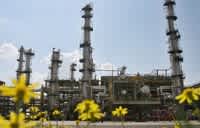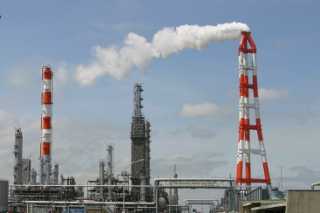
When the control room assets are upgraded, an opportunity is created to re-assess the state of the field instrumentation, cabling and local control panels. Updating wiring drawings and P&IDs will assure that the cables connected to the latest control and safety systems are connected to working and existing field devices.
Challenges for Customers
Customers are faced with various challenges as their plant assets age.
Growing concerns include keeping operational and maintenance costs low, yet ensuring the plant is able to adapt to new advanced technologies, applications and functions.
Meticulous planning and study must be done in creating a migration strategy that takes into account both your current assets and the new system.


Our Solutions
Yokogawa’s experienced specialists are involved in all phases of this process. Through its consulting service, Yokogawa can help you come up with an optimal migration strategy.
Detailed site survey during the FEED phase
Our involvement in the FEED phase can have a big impact on the success of a project. This is when value can be added that will be key to the success of the project. The important thing during the FEED phase is to find ways to avoid significant changes during the project execution phase, thereby helping to ensure that the customer’s requirements are met on time and on budget.
Risk assessment at feasibility study and/or FEED phase
Yokogawa’s highly experienced migration experts assess your migration risks by first analyzing your existing system to identify and prioritize potential issues, then consulting Yokogawa’s “lessons-learned” database to devise an appropriate risk mitigation solution.
Consulting service for improving plant performance
Yokogawa offers consulting services that seek to add value by optimizing the migration process and showing you how to manage production operations more effectively at your plant.
Customer Benefits
At the project execution stage, the entire project is implemented by the same team, from site survey to completion, thereby reducing overall risk to the project owner.
Our wide experience is reflected in a comprehensive risk register which is part of the Global Engineering Standard and used for every project. It is structured based on potential flaws, the root cause, risk level and priority, the phase of the project where the root cause happens, the mitigation plan and status during each phase. This register is updated through lessons learned.
This risk register covers areas such as instrument integrity, electrical integrity, HSE, people experience, coinciding events, operability & maintainability, process tightness and many more.
During risk workshops, these risks are discussed with operations and countermeasures are planned before and during the cutover.


Enabling Technology
Optimizing existing assets in the design and implementation phase
Benefits
With a Yokogawa FEED package plan, customers can derive the following benefits:
- Optimize planning of project scope, team, budget, schedule, etc.
- Anticipate and mitigate project risks
- Ensure a faster and smoother transition to the project execution phase
- Improve the quality and precision of project execution
- Improve how contractors and vendors are identified for a project
Details
To ensure quality workmanship, all work on site is done in accordance with the standardized procedures and design guidelines defined in the Yokogawa Global Engineering Standard (GES). Our Global Migration Center (GMC) ensures that engineering know-how is shared throughout the Yokogawa Group and that work is done in accordance with all applicable engineering standards.

Risk assessment at feasibility study and/or FEED phase
Yokogawa’s highly experienced migration experts assess your migration risks by first analyzing your existing system to identify and prioritize potential issues, and then consulting Yokogawa’s “lessons-learned” database to devise an appropriate risk mitigation solution.
Consulting service for improving plant performance
Yokogawa offers consulting services that seek to add value by optimizing the migration process and showing you how to manage production operations more effectively at your plant.
Yokogawa’s experienced specialists are involved in all phases of this process. Through its consulting service, Yokogawa can help you come up with an optimal migration strategy.
| Study area | Items to be analyzed | Benefits |
|---|---|---|
| Production system innovation |
|
|
| Refinery modernization |
|
|
| Offsite modernization |
|
|
| Enhancement of operations |
|
|
| Advanced process control (APC) |
|
|
Front End Engineering & Design (FEED)
During the FEED phase, Yokogawa studies the technical issues and makes a rough estimate of the project costs. Considerable value is added during the FEED phase. Many suppliers view the FEED process, in conjunction with consulting, to be a critical factor that determines both a project’s chances for success and the benefits accruing to the customer. To gain a good understanding of a project’s objectives and specific requirements, the Yokogawa FEED team seeks first to establish a good working relationship with end users, engineering, procurement, and construction (EPC) contractors, and suppliers. By getting involved in a project at the early stages, we can identify risks and provide suitable and reliable solutions that cover the entire plant lifecycle.

Early involvement means better risk identification
Also, with its considerable know-how, experience, and access to the latest design tools, Yokogawa is very efficient in carrying out FEED work and can ensure high quality and precise results. In addition, by also supplying systems as the project MAC, Yokogawa can provide safer and more sustainable solutions.
Resources
- Computerized Maintenance Management System by PRM and SAP Schedules Field Instrumentation Maintenance.
- The frame applications and DTMs support the preventive maintenance strategy with self-diagnostic and condition monitoring.
- A Japanese petrochemical plant leverages FDT/DTM-compliant intelligent field devices and Yokogawa's PRM asset management system for maintenance efficiency.
- The customer aims to improve maintenance efficiency further by introducing condition-based maintenance (CBM).
- Operational Excellence by Asset Maximization, Utilizing Yokogawa's DCS, SIS, Analyzers, and Field Instruments.
- The CENTUM VP PCS and ProSafe-RS SIS were integrated using the same engineering environment.
- Nearly 60 gas chromatographs and a large number of other types of analyzers in several analyzer houses.
- Yokogawa's FA-M3 PLC improves efficiency and accuracy at the lubricant blending processes in Thailand.
- FA-M3 is integrated with SFC Excellence's enterprise resource planning and recipe management system.
- FDT compliant FieldMate manages a wide variety of digital process instruments of multi-vendors.
- The SNF engineers can manage the complete lifecycle of assets and configure devices by using FieldMate.
Download this eBook and learn:
- The top challenges that drive reinstrumentation
- How to plan for and achieve a successful project
- Best practices in identifying your project scope
- 5 ways to improve operator effectiveness
- Different scenarios and best practices for updating, migrating or replacing process controls, safety systems, and instrumentation in plants
Looking for more information on our people, technology and solutions?
Contact Us




